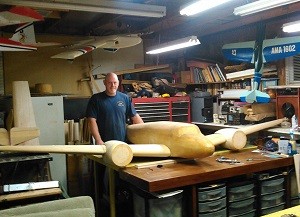Hello and welcome to the District IV safety blog! I would like to thank Jay Marsh for giving me the opportunity to cover safety and UAV education. I took quite a while to think of what the first post should be about and after a lot of thought I came to the conclusion that I should first introduce myself.
I am Bradford Booth and reside in Pleasant Garden, North Carolina. I have been the safety coordinator since being appointed so for about three years now. I have been an AMA member for a little over 30 years and am currently in the Central Carolina R/C Modelers club.
My father raised me at the airplane field and started me at an early age. My first solo flight was on a Midwest Tri-squire at about 4 years old. I have been building from scratch and kits since the age of 10. Before I had a drivers license I was an accomplished pattern flyer and was dabbling in pylon racing.
I am here for you the modeler first and foremost so I will welcome any input or questions that you may have. This blog is to help to educate beginners and remind us veterans of often overlooked safety issues.
With the flying season finally off to a start there is so much to cover. I plan on spending some in depth time on getting flight ready after being in the hanger for the winter. Topics such as battery cycling, control linkage and hinge checks, range testing, etc… Perhaps the first line of safety is to be prepared just in case something was to happen.
The best defense against accidents is to be prepared and alert so we need to take care of ourselves while at the field. The summers in our area can be hot and humid. This means plenty of water is imperative. Most clubs have some form of shelter for the rain that also provides shade but a good sunscreen is also a good idea to have on hand. Other items that should be considered would be insect repellent, band aids, antibiotic ointment, and some form of an antiseptic cleanser to clean a cut. A basic first aid kit is generally on hand at all AMA sanctioned fields.
Your club safety person should be keeping it well stocked and prepared for use but safety is everyone’s concern. Each of us should take the time to see if there is one at our club field, locate where it is, and then make certain that it is ready for use. Most safety kits include a list of items that are supposed to be inside the kit. If items have been used see that they get replaced.
Well hopefully this will post and then I can begin planning on upcoming blogs. Remember this blog is for you so any input, criticism, ideas, or questions are always welcome. Please just send an e-mail to me at bradford@ama-d4.org.
Till next time have a happy safe time modeling!
Bradford Booth

